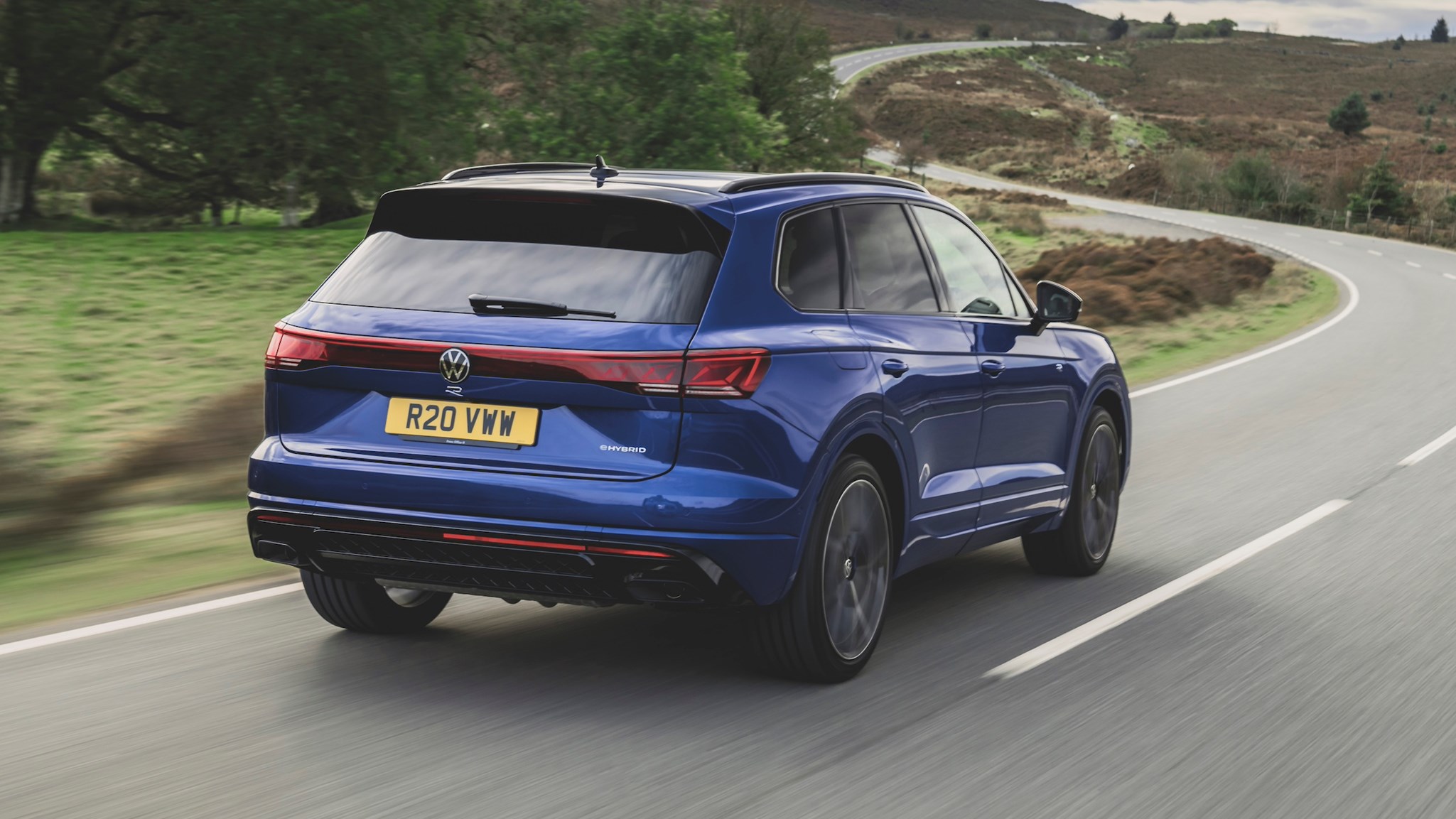► Lightly updated VW driven
► It’s the Touareg’s flagship hybrid
► Does it drive like a proper R?
This is the latest update for the range-topping Volkswagen Touareg R – a performance focused plug-in hybrid SUV that offers an upgrade path for former R-badged Golf, T-Roc and Arteon owners. In reality, it’s nothing of the sort, having previously concluding, ‘let’s just call it out now: this isn’t a true R product,’ after our first exposure to this car.
Be that as it may, the Touareg R is still a tax efficient, swift and useful full-sized SUV that offers better value for money than its more premium-badged rivals. And there are a few of them – not least the Audi Q7, Land Rover Discovery, Mercedes-Benz GLE, Porsche Cayenne and our favourite, the BMW X5.
Don’t get us wrong – not much has changed for the 2024 update. New front and rear lightbars for a more aggressive look are the most obvious signs, but other tweaks include a 15.0-inch touchscreen and 12.0-inch digital driver’s display with HD mapping for the sat nav. Throw in subtly updated stability control settings, and you’re there.
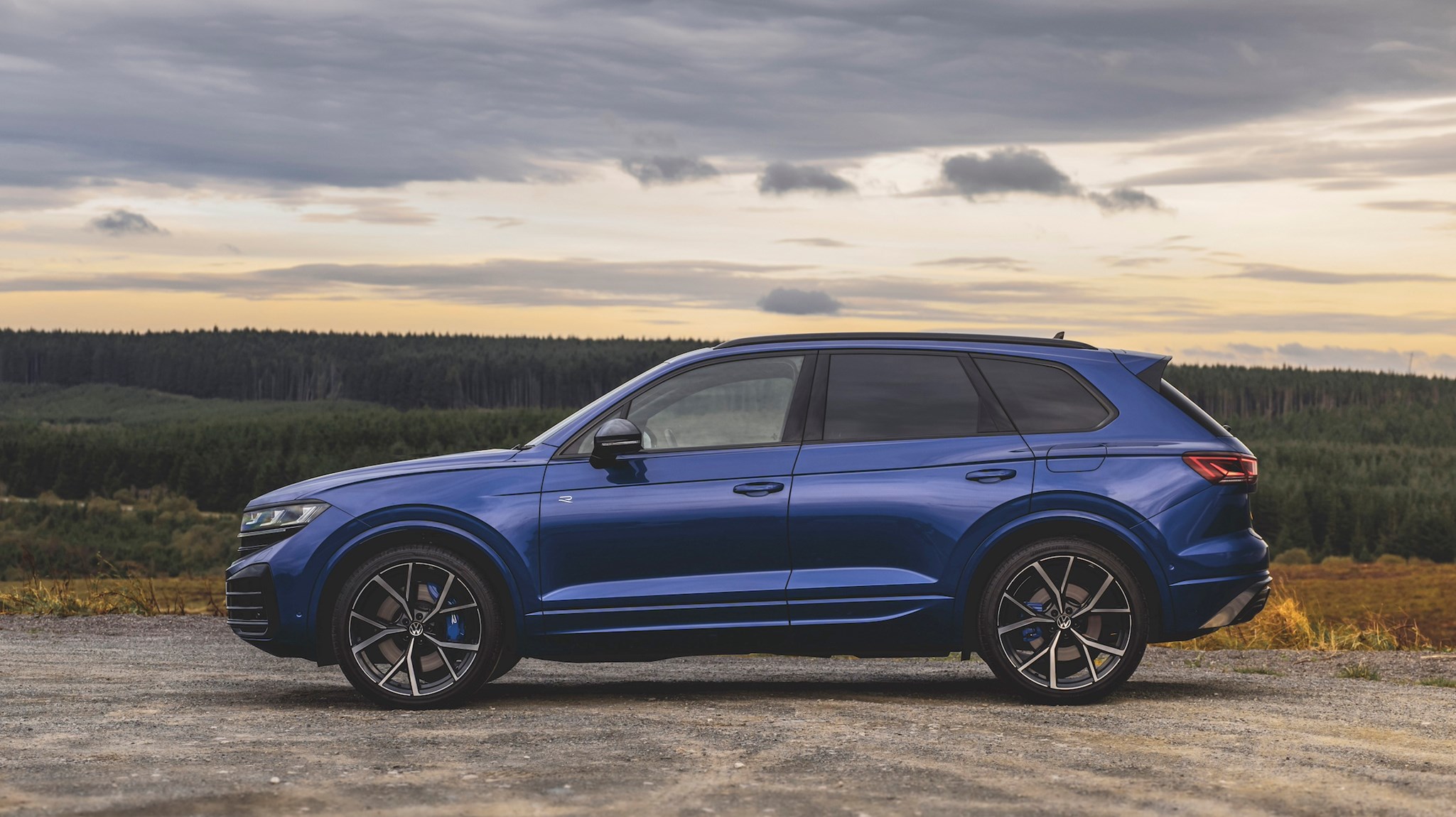
At a glance
Pros: Smooth and effortless, surprisingly agile, potential for reasonable economy
Cons: It weighs as much as a small planet, isn’t much fun and expensive compared with less powerful e-Hybrid PHEV
What’s new?
The Touareg R continues to be the most expensive and most powerful ICE car Volkswagen makes. Discounting what we noted in the introduction, there’s not actually that much new to talk about here compared with the 2021 original.
Its closest rival is the Porsche Cayenne e-Hybrid, which has just been facelifted, and in comparison with this car, the most powerful Touareg is looking good value for money these days. VW’s offering comes with more kit for less money, even if you forgo the option of the punchier V6S and wildly powerful Turbo S – who really needs 729bhp, anyway?
But against the BMW X5 45e, the Touareg R is looking a little wanting. Munich’s best is around £2k cheaper in M Sport spec against the Touareg. Yes, it’s less powerful the VW, but it’s a whole heap more satissfying to drive. Another one to factor is the diesel hybrid Mercedes-Benz GLE 350de, which offers more economy, a more relaxed motorway demeanor and a little less attitude.
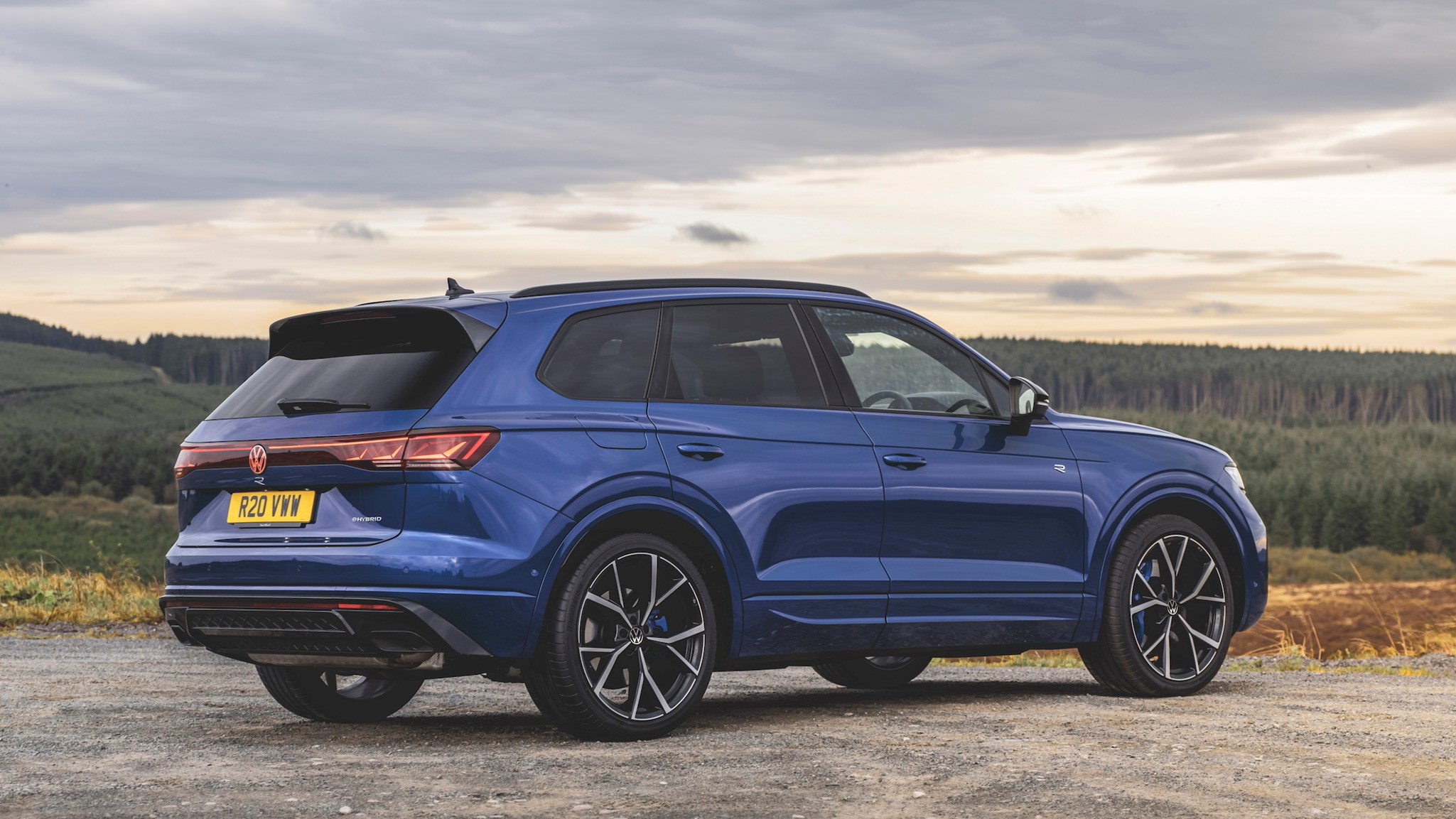
What are the specs?
The Tiguan R is a mighty range topper for Volkswagen – certainly in ICE terms. But it comes with a flagship-sized price tag; clocking in at more than £80k before any options.
It develops 456bhp from its twin-turbo 3.0-litre V6 and electric motor combo, and tips the scales at a pothole-inducing 2.5 tonnes. To earn its off-road spurs, it’s a 4Motion 4×4, and that drive is punted through a DSG eight-speed auto.
Range and charging
The Touareg R continues with its relatively small 17.9kWh battery pack, which takes around 2.5 hours to fill up on a domestic charger. There’s no provision for rapid CCS charging, as is the case with some of its younger rivals.
VW claims the R has a 31-mile range (WLTP) on a full battery, which is falling behind the best of the opposition, such as BMW’s 54 miles, but still more than enough to cover many UK commutes. However in testing, we found it gone within 23 miles of normal driving in cool weather.
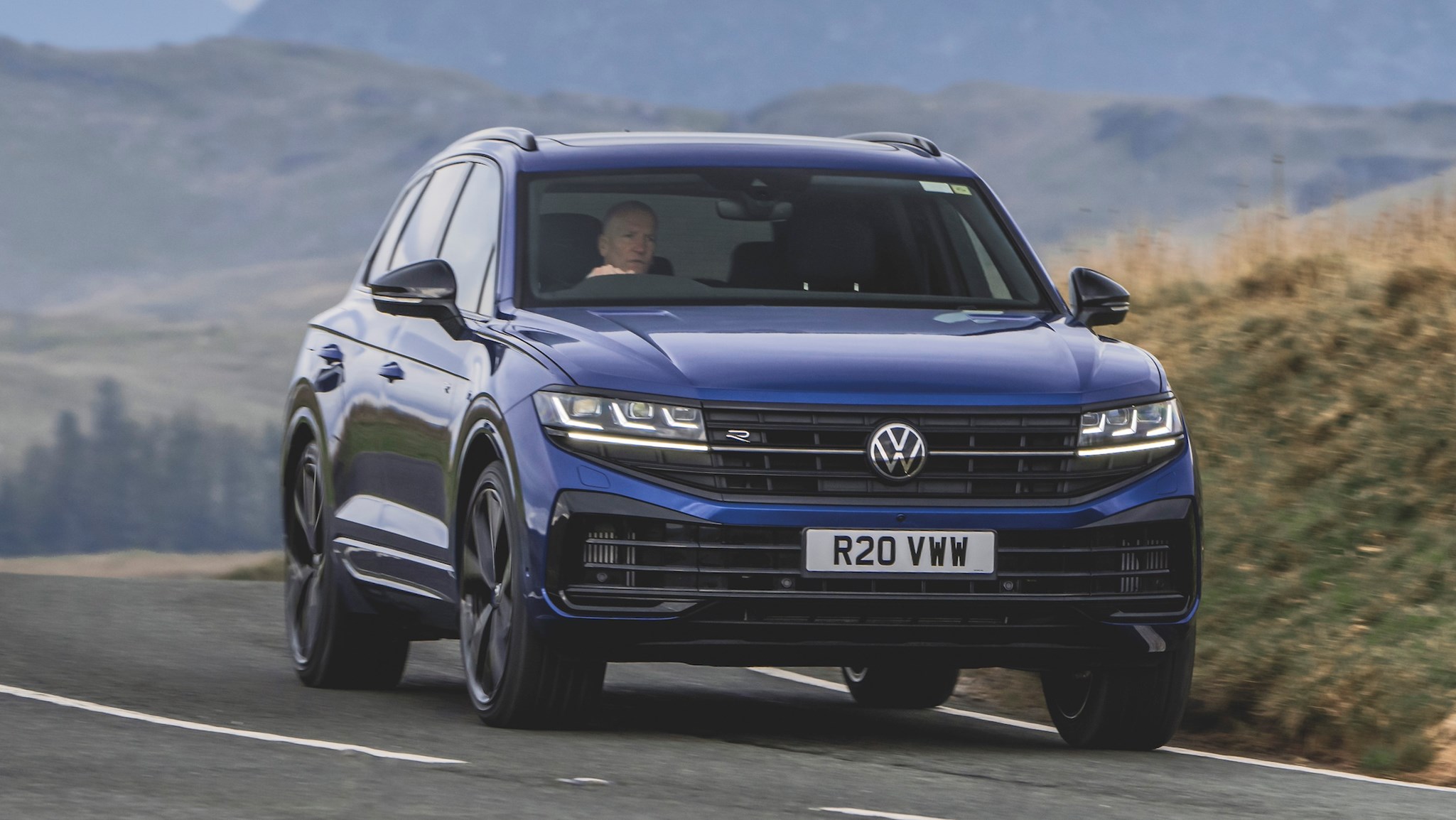
How does it drive?
All that weight and bulk can’t be fully disguised, even with its clever low-roll suspension and electrical assistance gamefully helping out. Like all Touaregs, it’s not really about performance and agility, but more focused on relaxed high-speed cruising, which it does very well indeed.
But that’s not to say it isn’t quick. Electric assistance gives it additional punch, and when the V6 is allowed to breathe deeply and open up, it sounds rather good. It accelerates with an almost linear surge that belies the car’s relatively modest 3.0-litre V6. Not so relevant is this car’s 5.1 second 0-62mph time, but how overtakes A-road dawdlers is – and thankfully there’s no DSG sit-and-wait antics to put up with here.
The car’s air suspension does have to be commended, too. It manages to hide inherent crashiness expected of the large 22-inch wheels, particularly at motorway speeds. If there’s enough charge, the R will happily use its e-power at these speeds too. Doing so, however, shines a spotlight on tyre noise, with the rubber regularly roaring on anything less than a perfect road surface.
Get more aggressive with your driving style and the R tries to keep up. This platform’s 48v anti-roll technology works overtime here, killing as much tilt as possible mid-corner. But the steering is a little slushy and the DSG needs to be left in Sport if it’s not to frustrate. Switching to manual mode allows you much more control, but they’re not that pleasant to use.
It’s capable, assured and solid, but not that much fun. It’s far better suited to cruising along peacefully, and truth be told, most owners will be more than happy with that balance.
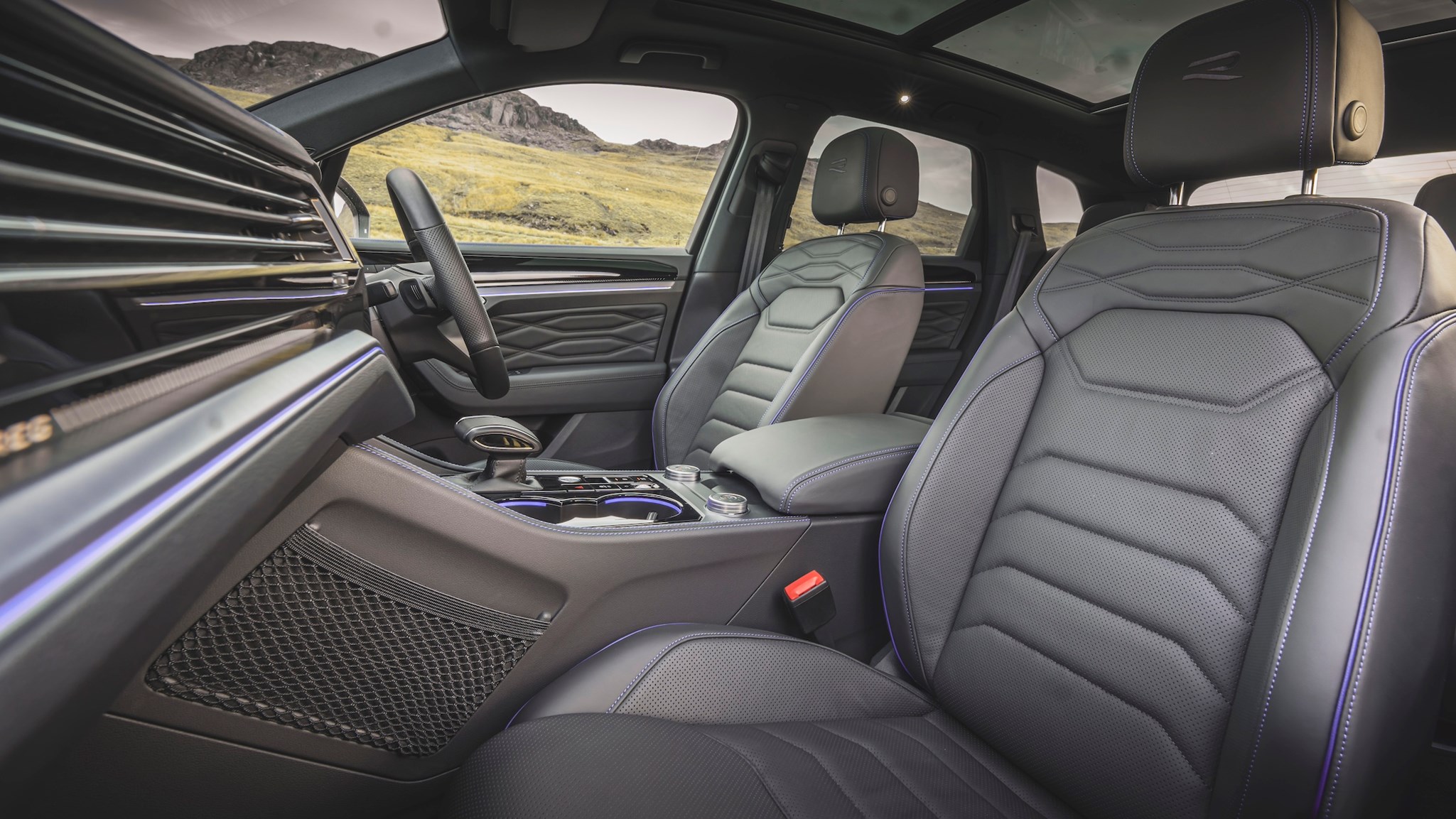
What’s about the interior?
It’s funny how the passage of time changes one’s perceptions. At launch, the Touareg’s 15.0-inch central screen seemed almost comically large, but today, it feel right-sized, and almost dated in appearance.
Unlike some more modest offerings from Volkswagen, there’s little to complain about here, with an easy to use interface and crisp, clear graphics. As for the haptic controls on the wheel, they really do take some time to get used to, and we actively dislike them – good job they’re going.
Other than some badging on the steering wheel and some thickly bolstered, R-branded seats, there’s little else that’ll drop any hints as to what you’re driving. There’s also no R button here, which is weird, as the Golf R and Tiguan R have it, and it feels like a feature that’s baked-in to the sub-brand.
Other than that, It’s all very well built and solid, and offers the same amount of lounging and boot room as any other Touareg – loads, then.
Before you buy
You’ll have already seen that the Volkswagen Touareg R costs more than £80k, and at that price there are some very talented and prestigious rivals. There is just one Touareg R in the model range, although a cheaper eHybrid PHEV with 375bhp is also available for £15k less.
The most relevant of its rivals are the standard petrol and diesel Touaregs, which make more sense on just about every metric – not least price, thanks to savings of up to £20k.
Company car users will find it reasonably tax efficient, as it emits 51g/km of CO2 to leave it slotting into the 15% benefit-in-kind tax band. But with its lower price and far better EV range of 54 miles, the BMW X5 stacks up far better.
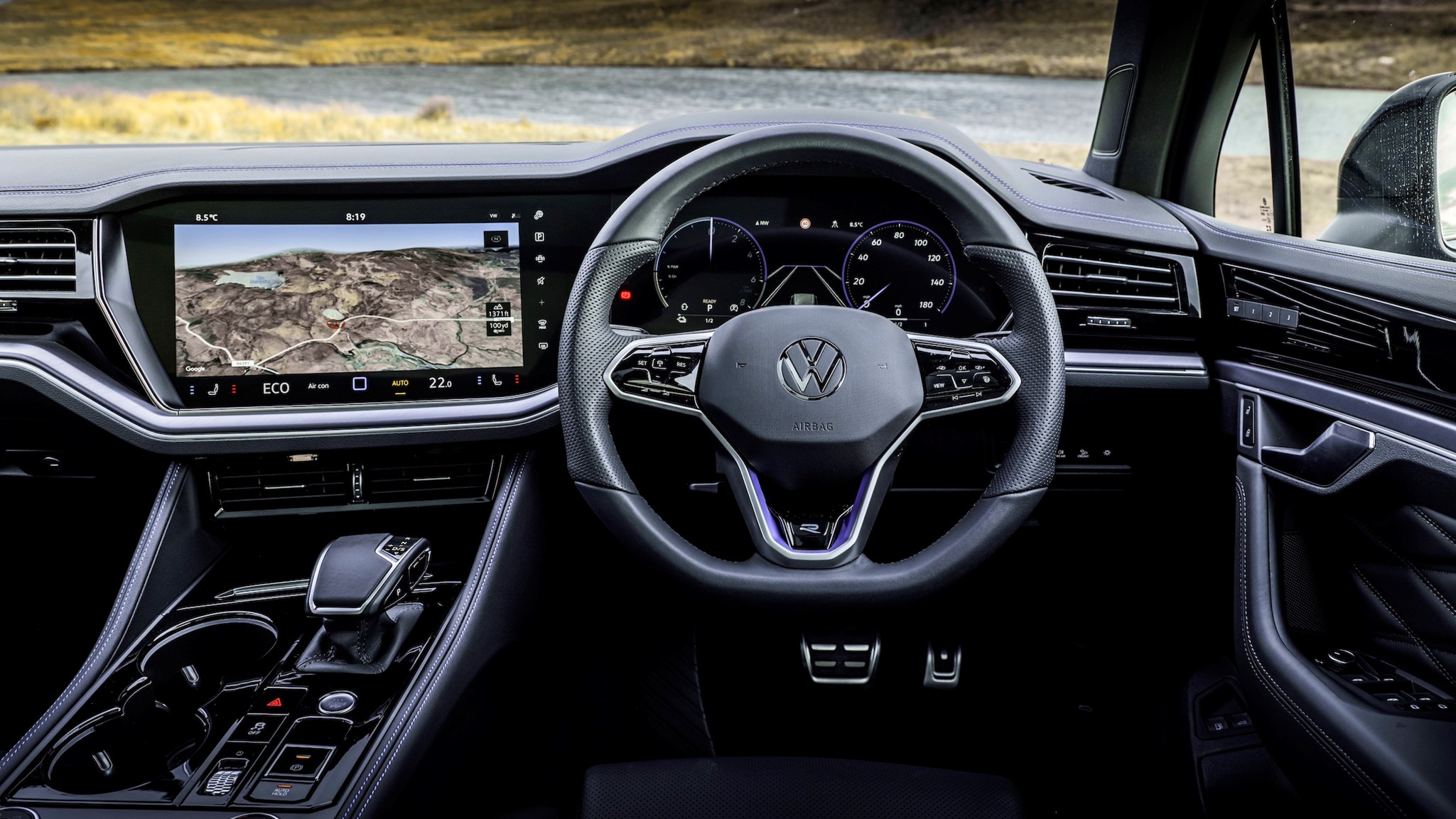
Verdict
We’re still left very confused by the Volkswagen Touareg R. It’s fast, but not sporty, agile, but lacking in fun. It’s also quite irrelevant in today’s market, despite it earning some eco-merits for being a plug-in hybrid.
It has plenty of power, a comfortable ride, and offers decent value compared with its Porsche counterpart. But it’s not nimble or exciting enough to wear its R badge, and as such feels very conflicted in its own skin.
For the money an optioned-up BMW’s X5 45e offers more e-range, nearly as much performance, and really is much more satisfying to drive. But that doesn’t mean we can’t recommend the Touareg – just not this one. A standard 3.0-litre V6 diesel covers off all that this car so does well, and that’s the one we’d buy.
Read more Volkswagen reviews here
